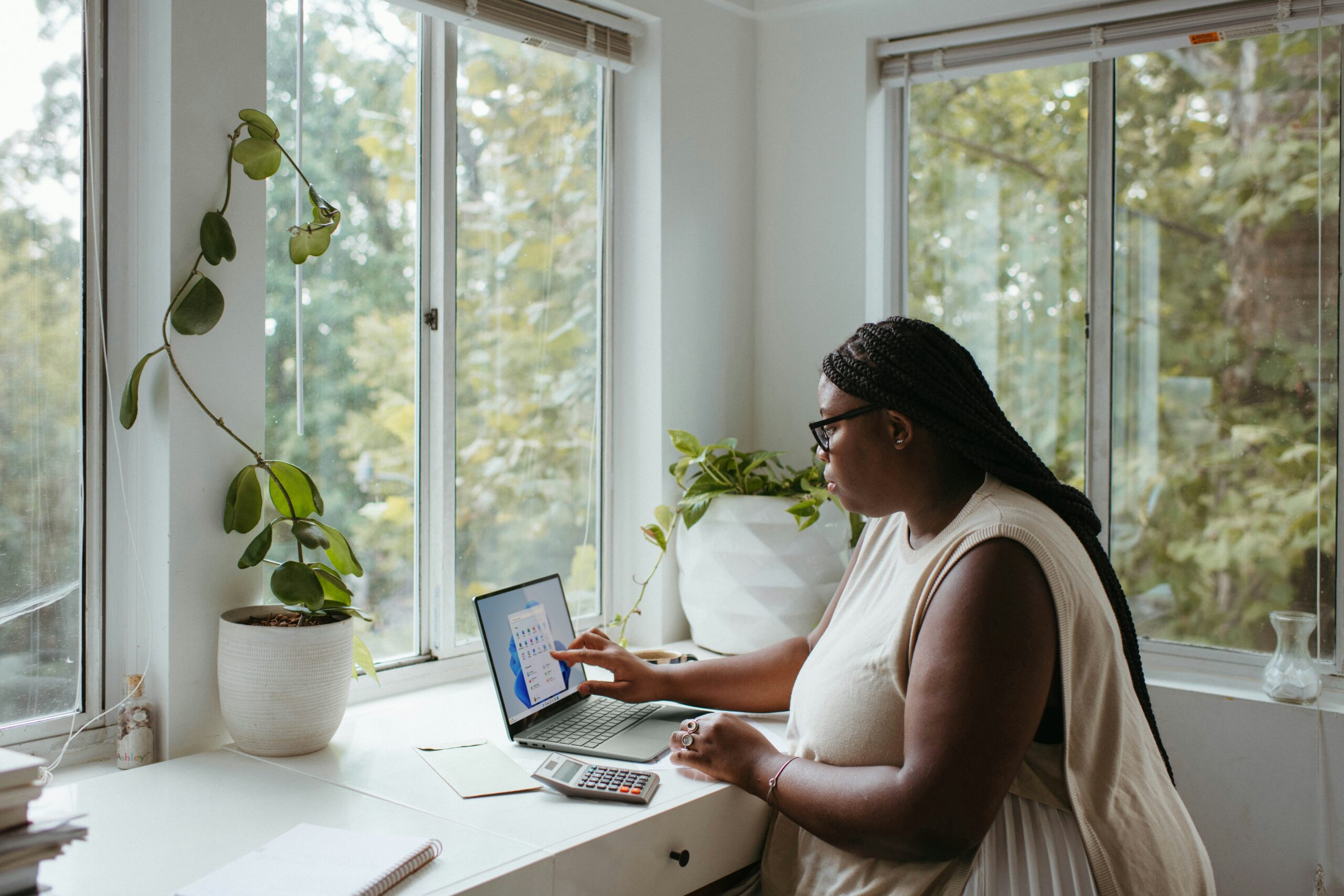The Future Of The Office
Picture this: a dynamic space where innovation meets comfort, a place that evolves with the rhythms of technology and the pulse of human needs. This is what I imagine when I think about the future of the office. It’s a realm that’s constantly shifting, shaping itself to offer not just a site for work, but a canvas for collaboration, creativity, and personal growth. As I explore the transformations on the horizon, from cutting-edge tech to the reimagining of physical spaces, I’m eager to share my insights with you on what the office of tomorrow might look like. Join me on this exciting journey as I unveil the potentials that await us in the workplaces of the future.

The Evolution of the Workplace
Transition from traditional to modern offices
I have witnessed a significant transformation in the way offices are structured. Gone are the days when traditional offices, with their high-walled cubicles and rigid layouts, ruled supreme. Nowadays, open-plan designs, which promote a more dynamic and collaborative work environment, have taken center stage. This has opened up the physical space and, in many ways, reflects a more open approach to corporate hierarchy and communication.
Influence of technology on workplace design
Technology has had a profound effect on workplace design. My workstation is no longer a bulky desktop that chains me to my desk. With laptops, tablets, and smartphones, I’ve become more mobile, and so has my workspace. We’ve seen the introduction of smart offices, equipped with Internet of Things (IoT) devices that control lighting, temperature, and even adjust desks to suit our ergonomic needs.
The impact of generational shifts on the office environment
Each generation brings its own set of values and working styles. I’ve noticed Millennials and Gen Z pushing for work environments that not only focus on productivity but also prioritize well-being, flexibility, and collaboration. This shift has led to offices with lounge areas, communal tables, and amenities that encourage a work-life balance.
Remote Work and its Implications
Rise of telecommuting and digital nomadism
The rise of remote work is something I could never have imagined when I started my career. Thanks to advancements in technology, digital nomadism is becoming a reality for many. With just a laptop and an internet connection, I can work from anywhere in the world, which has changed the face of what “going to work” means.
Pros and cons of remote work
Remote work has its upsides, like flexibility and the absence of a daily commute, which I certainly don’t miss. However, it also comes with challenges, such as feeling isolated and finding it difficult to unplug from work. Despite these cons, I’ve found that the autonomy it offers often leads to increased job satisfaction.
Managing a distributed workforce
With employees scattered across the globe, managers are faced with the task of keeping everyone on the same page. Leading a distributed workforce means adapting communication styles and finding tools that help everyone feel connected and engaged, despite not sharing the same physical space.
The Physical Office Space in the Future
Reimagining office layouts for collaboration
The office of the future will continue to evolve, and I foresee layouts being reimagined to foster even greater collaboration. Think fewer static locations and more huddle spaces, whiteboards everywhere for spur-of-the-moment brainstorming, and technology that supports real-time collaboration from any location.
Sustainable and eco-friendly office designs
Sustainable practices are becoming increasingly important, and I take pride in offices that reflect this value. Eco-friendly designs that leverage natural light, use recycled materials, and include living green walls are becoming more prevalent. These practices not only help the environment but also create a more pleasant atmosphere for work.
Integration of health and wellness into office architecture
It’s becoming clear that the well-being of employees directly impacts productivity. As such, office architecture now often includes elements that promote health and wellness. From ergonomic furniture to in-house fitness centers and even meditation spaces, future offices are set to become sanctuaries for physical and mental health.
Workplace Technology Advancements
Artificial Intelligence and Machine Learning in the office
Artificial Intelligence (AI) and Machine Learning (ML) are not just buzzwords in my world. They’re reality. AI and ML are increasingly used for tasks like data analysis, forecasting, and even handling routine queries through chatbots. This technology makes my job easier and allows me to focus on more strategic tasks that require a human touch.
The role of Virtual Reality (VR) and Augmented Reality (AR) in workplace training
VR and AR are poised to revolutionize workplace training. With VR, I can simulate real-world scenarios for hands-on learning without the associated risks or costs. AR overlays information onto the physical world, enhancing training by integrating digital information with my day-to-day tasks.
Future office gadgets and tools to enhance productivity
I’m excited about the potential of future office gadgets and tools. From smart wearables that track my productivity to digital whiteboards that sync with my cloud-based documents, technology is bound to make my work even more efficient. These innovations not only save time but also help in managing tasks with precision.

The Impact of Automation and Robotics
Automated administrative tasks and their effects on staff
Automation has relieved me of many repetitive and mundane tasks. Administrative work, such as scheduling and data entry, is now often handled by software. This enables staff like me to focus on more complex and interesting work, which can lead to a more fulfilling career.
Collaborative robots (cobots) in the office environment
The introduction of collaborative robots, or ‘cobots,’ into the office is a fascinating development. These machines work alongside humans, aiding in tasks that may be too dangerous or tedious. The idea isn’t to replace us but to augment our abilities and increase workplace safety and efficiency.
The balance between human and machine in the office
With all this talk of automation, it’s crucial to find the right balance between human and machine. While robots and AI can improve productivity, the human element—creativity, empathy, and ethical judgment—remain irreplaceable. I am conscious that maintaining this balance is essential for a harmonious and effective workplace.
The Gig Economy and Freelancers
Adapting office structures for gig workers
The gig economy is on the rise, and with it comes the need to adapt office structures to accommodate the flexibility that freelancers and contractors require. I’ve seen more hot-desking environments and shared workspaces, which are perfect solutions for workers who may not need a permanent office setting.
Co-working spaces and their growing importance
Co-working spaces have seen a surge in popularity, providing a substitute for traditional offices for freelancers like me. These spaces foster a sense of community and offer the infrastructure of a conventional office without the long-term commitment.
Legal and resource management for flexible employment
With the increase in freelancing, it’s important for businesses to manage resources and understand the legal aspects of flexible employment. I’ve noticed a trend in companies developing clear policies and using management tools to ensure compliance and efficient allocation of resources.

Office Culture and Employee Experience
Shifting towards a culture-first office space
There’s a growing understanding that office culture deeply affects the employee experience. Designing a culture-first office means creating spaces that reflect the values and ethos of the company, which, in turn, helps in attracting and retaining talent like me who resonate with these values.
The role of leadership in future office environments
Leadership plays a crucial role in shaping the office environment. As someone who has been on both sides of the table, I can attest to the impact that visionary leaders have on fostering an innovative and supportive workplace—one that encourages growth and embraces change.
Creating a sense of community and belonging in a digital age
Despite the digital nature of our work, the need for human connection remains. Companies are finding ways to create a sense of community and belonging among employees, whether it’s through team-building activities, virtual coffee breaks, or platforms that celebrate personal milestones.
Communication and Collaboration Tools
Emergence of new platforms for virtual meetings and teamwork
The marketplace for communication and collaboration tools is bustling. New platforms are constantly emerging, offering innovative ways for teams like mine to stay connected. Whether it’s project management software, video conferencing tools, or shared digital workspaces, these platforms are integral to modern teamwork.
Streamlining communication in a global workforce
As a part of a global team, clear and streamlined communication is paramount. The adoption of collaborative tools ensures that no matter what time zone we are in, we can communicate effectively, maintain alignment on projects, and keep the workflow smooth.
Ensuring cybersecurity in office communications
With the increased reliance on digital tools, cybersecurity in office communications has never been more important. Protecting sensitive company data from breaches is a top concern, and I’m comforted by the stringent security measures and protocols that modern communication tools employ to safeguard our exchanges.
Re-defining the Balance between Work and Life
Flexible working hours and their impact
Flexible working hours have redefined the work-life balance. This flexibility allows me to work when I’m most productive and accommodate personal obligations, leading to higher job satisfaction and improved well-being.
Onsite amenities and services to promote work-life integration
Some companies have taken the integration of work and life a step further, offering onsite amenities such as child care, gyms, and even laundry services. These perks make it easier to manage life’s necessities without compromising work responsibilities.
Policy changes to accommodate the new balance
Work-life balance isn’t just about onsite amenities; it’s about policy changes that support diverse lifestyles and working patterns. From extended parental leave to mental health days, I believe that the companies that adapt their policies to meet modern needs will be the ones that excel.
Conclusion: The Office of Tomorrow
Summary of key changes and developments
In this article, I’ve reflected on the key changes and developments that have shaped the modern workplace, from the shift towards open and flexible office designs to the rise of remote work and advancements in workplace technology.
The office as part of a larger ecosystem
The office of tomorrow isn’t just a physical space but a part of a larger ecosystem that includes virtual environments, collaboration tools, and policies that support a diverse workforce. The office is becoming more than a place of work; it’s a hub of innovation, community, and culture.
Embracing change and innovation for a brighter working future
Ultimately, embracing change and innovation is crucial for a brighter working future. As someone deeply involved in the evolving workplace, my journey is about continuously adapting and finding new ways to work smarter and live better. The office of tomorrow holds the promise of not just enhanced productivity, but also an improved quality of life—personally and professionally.







